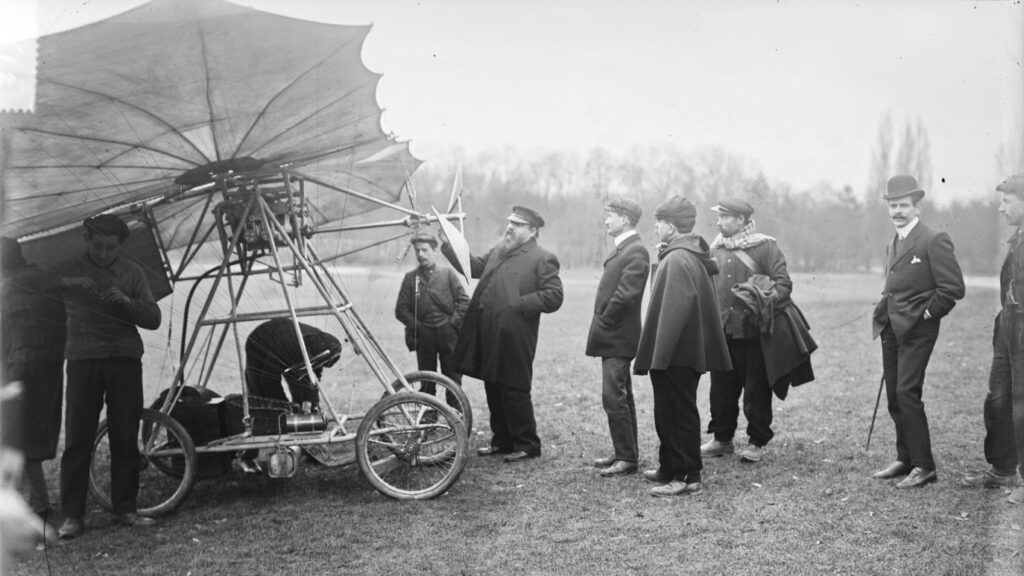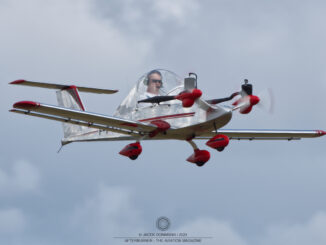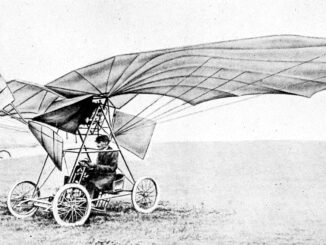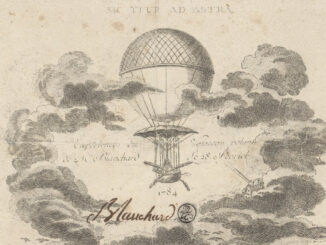 On 16th February 1903, Romanian inventor and aviation pioneer, Traian Vuia, presented his concept of the flying machine, described as the ´aeroplane-car´, to the French Academy of Science. Regrettably, his idea was rejected with the conclusion there is no possibility to ever built a heavier-than-air apparatus that would be able to fly.
On 16th February 1903, Romanian inventor and aviation pioneer, Traian Vuia, presented his concept of the flying machine, described as the ´aeroplane-car´, to the French Academy of Science. Regrettably, his idea was rejected with the conclusion there is no possibility to ever built a heavier-than-air apparatus that would be able to fly.
Traian Vuia was born on 17th August 1872 in Surducu Mic, a village of Bujor commune in then the Austro-Hungarian Empire (now in Romania). Since his early years, Vuia was interested in mechanics and engineering. His passion for aviation had began at the age of ten, when Vuia attended an aviation show and became fascinated with kites. As a result, he started to build his own constructions and, during his high school years, his interest turned towards laws of aerodynamics and the physics of flying.
In 1892, Traian Vuia began to study mechanical engineering at Polytechnic University of Budapest. However, he soon realized that he had not enough money to continue his education there. Therefore, after attending the engineering course for one year, Vuia decided to study law. That change allowed him to practice and then work in the law offices and earn money for living. In 1901, Vuia finally completed his studies and earned a PhD in law.
After graduating, Vuia returned to his homeland and settled in Lugoj. There, he continued his studies on flying and developed his first concept of the heavier-than-air apparatus. Vuia designated his project as aeroplan-automobil (English: aeroplane-car) but lack of funds did not allow him to complete the prototype.
In July of 1902, Vuia decided to go to Paris, hoping to find some aviation enthusiasts there, interested in financing his project. Regrettably, the French aviation society gave him the ice treatment. Vuia´s meeting with balloon developers and other leading aeronautic inventors failed to produce any results. It seemed that Victor Tatin – at the time famous aeronautical inventor and engineer who developed the first flying model aeroplane – was interested in ´aeroplane-car´, but finally he found the Vuia´s apparatus underpowered and unstable.
Not discouraged with disappointment, Vuia made another attempt to arouse any interest in his project. On 16th February 1903, he presented the ´aeroplane-car´ to Académie des Sciences (Academy of Science) in Paris. Regrettably, the Romanian inventor was also rejected there. What´s more, the French learned society said in conclusion that: ´The problem of flight with a machine which weighs more than air cannot be solved and it is only a dream´.

Despite the lack of interest in the ´aeroplane-car´, Vuia continued development of his heavier-than-air aircraft. However, he was in financial difficulties again and managed to recover only with help of the Romanian lawyer and politician, Coriolan Brediceanu, who was Vuia´s long-time supporter and mentor.
That support also allowed Vuia to apply for the French patent protection for his ´aeroplane-car´. On 17th August 1903, the patent was successfully granted with No. 332106 and officially published in October of the same year. Next year, Vuia additionally patented his project in the Great Britain.
In autumn of 1904, Vuia began with engine development and his ´aeroplane-car´ was finally completed until the end of the next year. Officially, the apparatus was designated Vuia I, however it was commonly nicknamed ´the Bat´, because of shape of its wings. The aircraft was powered by 20 hp engine, had wing area of approximately 14 m2 and weighted 250 kg. Its engine was made by Vuia himself and used carbonic acid gas as source of power. Due to limited fuel tank, the powerplant was able to run for only five minutes, approximately.
In December of 1904, the first trials of the ´aeroplane-car´ began. However, at that time, the Vuia I was tested without wings, only in its car configuration.
The Vuia I performed its maiden flight on 18th March 1906, at Montesson, in the western suburbs of Paris. After running for about fifty metres, the ´aeroplane-car´ took-off to a height of one metre and flew a distance of twelve metres. Then, the Vuia I run out of the fuel and successfully landed.
However, the first hop of the Vuia I went unnoticed. The only witnesses of the flight were two mechanics who assisted Traian Vuia in Montesson. Therefore, he wrote a letter to L’Aérophile, the aviation magazine issued by the Aéro Club of France. Nevertheless, Vuia´s efforts were officially recognized only in August of 1906. In October of the same year, he performed the first public demonstration of the Vuia I.
And from that moment on, Vuia´s flight was noted in French and international press. The Vuia I was proclaimed the first heavier-than-air aircraft that managed to take-off from a flat surface and without any additional support. Although the first heavier-than-air-aircraft had already performed its maiden flight in December of 1903, the Wright Flyer (as well as next developments of the Wright brothers) needed a monorail launch track to take-off.

In 1907, Traian Vuia built his second aircraft, designated Vuia II. It was powered by Antoinette internal combustion engine, generating 25 hp. The aeroplane was smaller and lighter than the Vuia I, however it managed to make only a short hop of approximately twenty metres. The aircraft was damaged during landing and did not fly again anymore.
There is very little information about Vuia´s other aviation activities until the outbreak of the Great War. After the war, he continued with his development and built two experimental rotorcraft. They performed short take-offs in 1920 and 1922, respectively. However, the Romanian inventor was not satisfied with the results and abandon further development of helicopters.
In addition, Vuia also worked on some other engineering inventions, mainly engines and generators. He patented several of his works, not only in France but also in Australia, Belgium, Canada, Germany, the Great Britain, Hungary, the United States and few other countries.
In 1929, Vuia published a book on his aviation studies, Etudes expérimentales sur les plans inclinés en rotation (English: Experimental Studies on Inclined Rotating Planes). Yet in the 1920s, he began to work on catalyst combustion generator for aircraft propulsion and worked on it until outbreak of the World War II that cut short his development.
After the war, Traian Vuia returned to Romania. However, he died shortly afterwards, on 3rd September 1950, aged 78.
After his death, Bujor commune was renamed Traian Vuia in his honour. Several streets and schools in Romania were named after him, as well as the international airport in Timișoara. In 2012, a small museum dedicated to life and works of the Romanian aviation pioneer was opened in the village he was born.
Debates, about whether Vuia´s apparatus really was the first aircraft to take-off without any support and from a flat surface, continue to this day. Critics underline that the Vuia I made just short hops, not a real flight. On the other hand, the first flight performed by the Wright Flyer – indisputably considered to mark the beginning of aviation – was made only on a distance of approximately 36.5 metres and just three metres above the ground.

Cover photo: Léon Levavasseur, examines Vuia´s aircraft, with Traian Vuia standing behind him (centre right), Paris, 9 March 1907 (source: gallica.bnf.fr / Bibliothèque nationale de France, ark:/12148/btv1b53223017z, cropped).
Source of quotation from Académie des Sciences, 16 Feb 1903 – Biblioteca Academiei Române website.



